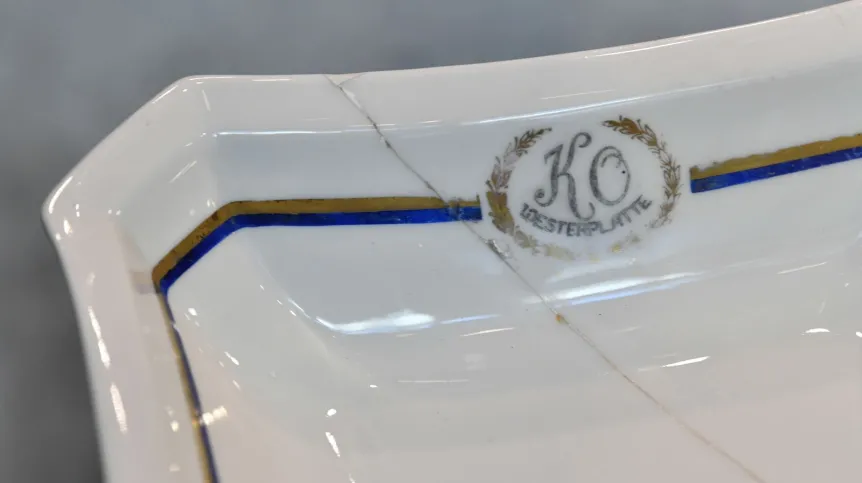
1500 items were discovered during the 9th stage of archaeological research at Westerplatte, some of them related to the service of Polish soldiers. The most valuable artefacts, including a military map template, were presented last week at the Museum of the Second World War in Gdańsk.
The result of the recently completed 9th stage of archaeological research at Westerplatte were presented last week at the Museum of the Second World War. During five months of work, researchers documented relics of ammunition shelters No. 8, 10, 11 and 12, studied the area of the Polish 76.2 mm cannon and continued the search for the remains of the legionary Mieczysław Krzak, a fallen defender of the depot.
Archaeologists conducted research in the vicinity of the historic power plant of the Military Transit Depot and supervised the construction of a new Cemetery of the Polish Army Soldiers at Westerplatte. Near the necropolis, they discovered three craters formed as a result of the German attack on the Polish depot, in which they found items from nearby buildings - officer villa and guardhouse No. 5.
Director of the Museum of the Second World War, Professor Grzegorz Berendt, who attended the presentation of the most valuable artefacts, emphasised that archaeological work at Westerplatte had been conducted since 2016. 'This is the first archaeological research project in eight decades that have passed since the end of World War II', he emphasised.
He added that the results of work are the 'achievements of employees' of the institution he managed. 'The enthusiasm, devotion, intuition and knowledge of people working in the museum stood against all those who had for a long time negated the point of working at Westerplatte', the director said.
When presenting objects recovered by archaeologists, he noted that these were 'unique objects', thanks to which 'we can touch the history and meet the people who worked at the created a Military Transit Depot and defended Poland in 1939'.
The work of archaeologists was supervised by Filip Kuczma, who noted that during the research archaeologists recovered over 1,500 items, some of them related to the service of Polish soldiers at Westerplatte.
'During the research project, we documented in detail, using archaeological excavations, an area of 860 sq m', said Kuczma.
He pointed out that four from 1,500 discovered artefacts, four were selected that 'could be linked to soldiers serving at Westerplatte'.
Four items were presented at the museum: an eagle from the 63rd Infantry Regiment garrison hat, a template for military maps, a platter from the officer's casino tableware and a Polish soldier's flask.
Kuczma explained that the eagle from the 63rd Infantry Regiment garrison hat was made of brass. 'It bears the emblem of the 63rd Infantry Regiment from Toruń. Soldiers of this unit served in the Military Transit Depot at Westerplatte in 1926-1933'.
The military map template was found in the bomb crater near the officer's villa. 'In 1939, the building served as the quarters of the Military Transit Depot commander Major Henryk Sucharski and his deputy, Capt. Franciszek Dąbrowski', said Kuczma.
He added that the presented item probably belonged to one of them.
When presenting the remaining discovered items, the head of archaeological work pointed to a dish with a characteristic monogram and ornament in the form of a gold-blue band, which was made on a special order at the 'Giesche' porcelain factory in Katowice. 'The casino for the Military Transit Depot officers was located in the officer's villa', emphasised Kuczma.
The last of the presented items was a flask damaged on September 2, 1939 during the raid on the Military Transit Depot, during which the guardhouse No. 5 was completely destroyed. 'The object was found in the bomb crater discovered in the vicinity of the officer's villa and the guardhouse', explained the archaeological work supervisor.
The items presented last week were placed in a cabinet at level -1 of the Museum of the Second World War in Gdańsk, as part of the 'Entrance to History' campaign.
This objective of this cycle is to present exhibits related to current anniversaries, war events or issues of the war and occupation period, which are not usually presented in the museum space. (PAP)
author: Piotr Mirowicz
pm/ dki/ kap/
tr. RL













